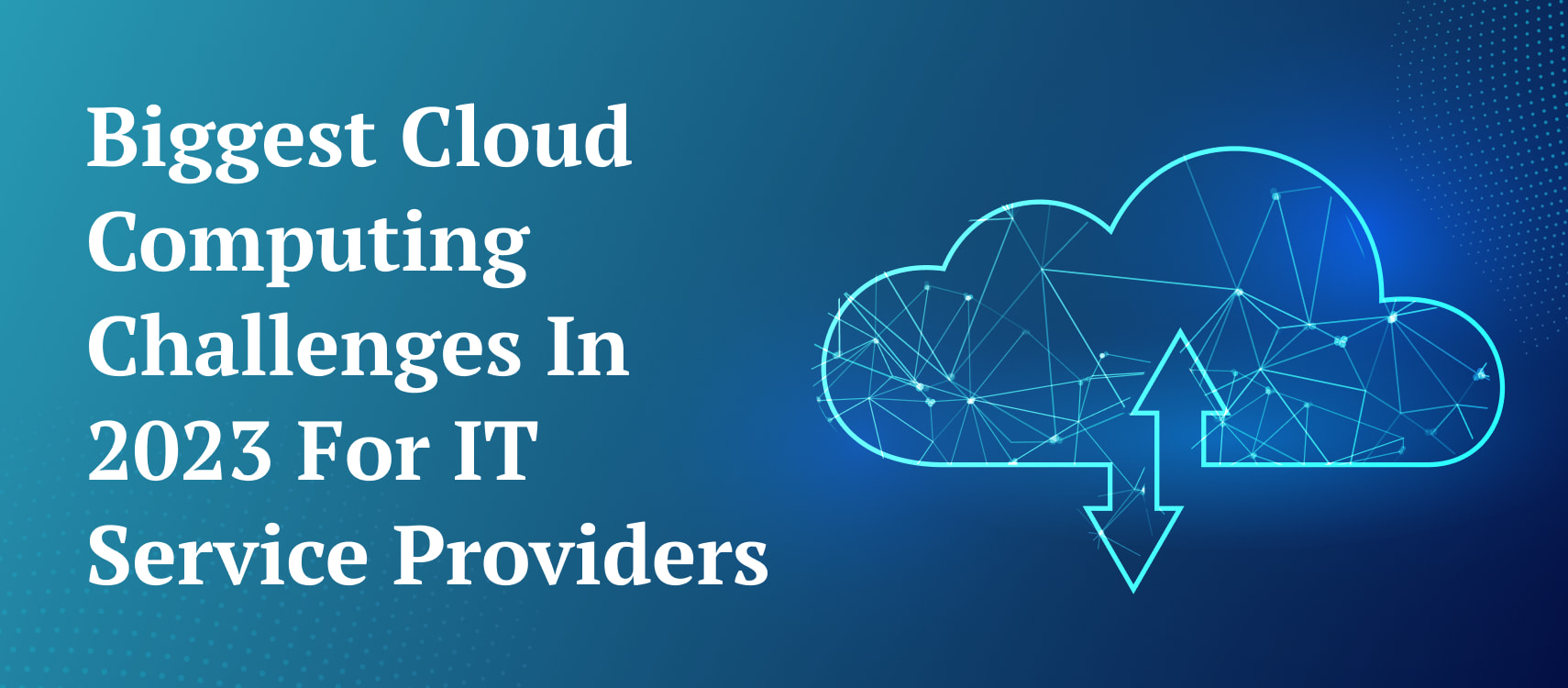Table of Contents
- Insufficient Resources and Expertise
- Data Security and Privacy
- Migration and Integration
- Multi-Cloud Environments
- Customising Architecture
- Compliance Issues
- Dealing with Immature Technology
- Summarising
Cloud computing remains a cornerstone of technological innovation. However, the journey to harness the benefits of the cloud is not without its hurdles. Cloud computing services face an array of challenges in 2023, ranging from resource insufficiency and data security concerns to complex migration and the complexities of managing multi-cloud environments.
In this article, we will talk about the most pressing cloud computing challenges of the year, exploring the advantages and drawbacks of this transformative technology.
Insufficient Resources and Expertise
In the realm of cloud computing technology, the scarcity of resources and expertise emerges as a formidable challenge for IT service providers. While the cloud promises scalability and flexibility, finding skilled professionals who possess the requisite expertise remains a hurdle. A RightScale report highlights that a staggering 75% of respondents perceive this challenge, with 23% considering it a significant hurdle.
The rapidly evolving nature of cloud technology demands professionals proficient in the latest advancements, such as cloud-native architecture for serverless computing, security best practices, and multi-cloud management. To address this scarcity, businesses are increasingly focusing on upskilling existing employees and hiring individuals with cloud-centric certifications. The Robert Half Technology 2019 Salary Guide emphasizes the prioritization of technical employees who possess knowledge of cloud computing and other emerging technologies. Providing training and educational opportunities to the current workforce becomes pivotal in bridging the expertise gap and fostering a more skilled and efficient cloud workforce.
Data Security and Privacy
In an era dominated by data-driven decision-making, data security in cloud computing plays a key role. The very nature of cloud environments, where data is stored and accessed remotely, raises concerns about unauthorized access, data breaches, and the loss of control. The absence of full visibility and control tools, coupled with potential misconfigurations and insecure APIs, amplifies the risks associated with data privacy.
Addressing these challenges requires a comprehensive approach. Organizations need to implement robust security measures, including firewalls, antivirus solutions, and regular software updates. Identity access management (IAM) plays a crucial role in ensuring that only authorized individuals can access sensitive data. Moreover, employing encryption and adhering to industry standards such as HIPAA and GDPR enhance data security and regulatory compliance.
Migration and Integration
While the allure of the cloud is undeniable, the process of migrating and integrating legacy systems presents significant challenges. Many businesses are grappling with the accumulation of technical debt due to a lack of integration with existing systems. The year 2023 is poised to bring these challenges to the forefront, compelling companies to strike a balance between cloud evolution and optimization of existing systems.
The complexity of migrating legacy systems to the cloud cannot be overstated. Companies must carefully weigh the benefits of modernization against the costs and complexities of cloud migration. The consequences of moving ‘too much too fast’ without proper integration strategies can lead to underwhelming ROI and operational inefficiencies. To navigate these challenges, organizations must adopt a pragmatic approach. This may involve deploying new platforms that are designed to seamlessly integrate with various data sources or opting for gradual modernization strategies that maximize the benefits of the cloud while minimizing disruption.
Multi-Cloud Environments
The trend towards adopting multi-cloud environments presents both opportunities and challenges. While multi-cloud architectures offer flexibility and redundancy, they introduce complexities that demand meticulous management. Configuration errors, security vulnerabilities, data governance, and lack of granularity can hinder the seamless operation of multi-cloud environments.
To mitigate these challenges, enterprises must implement multi-cloud data management solutions that provide a unified view of data and enable consistent security measures. Open-source tools like Terraform can help manage the complexity of multi-cloud architectures. However, maintaining visibility, security, and data consistency across multiple cloud providers requires a strategic approach that aligns with the organization’s objectives.
Customising Architecture
Customization is a double-edged sword in cloud computing. While customization aligns cloud usage with business objectives, it also introduces limitations due to security and performance considerations. The need to ensure necessitates thorough security checks for any customizations. Additionally, excessive customization might slow down system performance due to dependencies on external resources.
Balancing customization and security is a challenge that requires careful consideration. IT service providers must strike a balance between tailored solutions and maintaining the integrity of the cloud environment. Exploring the extent to which customization can be implemented while adhering to security best practices is crucial for creating robust and efficient cloud architectures.
Compliance Issues
The complex landscape of compliance regulations poses another challenge for IT service providers. Regulations such as GDPR, HIPAA, and industry-specific standards necessitate careful planning to ensure proper integration and adherence. Centralizing policies and mechanisms to ensure compliance across different systems and hosting platforms can be a daunting task.
To address this challenge, organizations must establish robust compliance frameworks that align with governmental and industry regulations. Implementing security controls, data protection mechanisms and regular audits becomes essential in safeguarding sensitive data and avoiding potential penalties.
Dealing with Immature Technology
While cloud computing has ushered in unprecedented innovation, the use of emerging technologies like Artificial Intelligence (AI), Machine Learning (ML), Big Data, and Augmented Reality (AR) introduces its own set of challenges. These technologies, while promising, are still in their nascent stages and may underperform or present unexpected curveballs.
To navigate this challenge, IT service providers must adopt a cautious yet forward-looking approach. Adjusting expectations and investing in R&D to improve the capabilities of emerging technologies are essential steps. Practicing patience and a willingness to address limitations while pursuing innovation will be key to unlocking the true potential of these transformative technologies.
Summarising
The cloud computing landscape of 2023 is marked by challenges that reflect the evolving nature of technology and business. While these challenges are formidable, they are not insurmountable. By adopting a strategic approach that prioritizes expertise, security measures, compliance, and innovation, businesses can navigate the cloud computing landscape with confidence, unlocking new possibilities and driving digital transformation.










